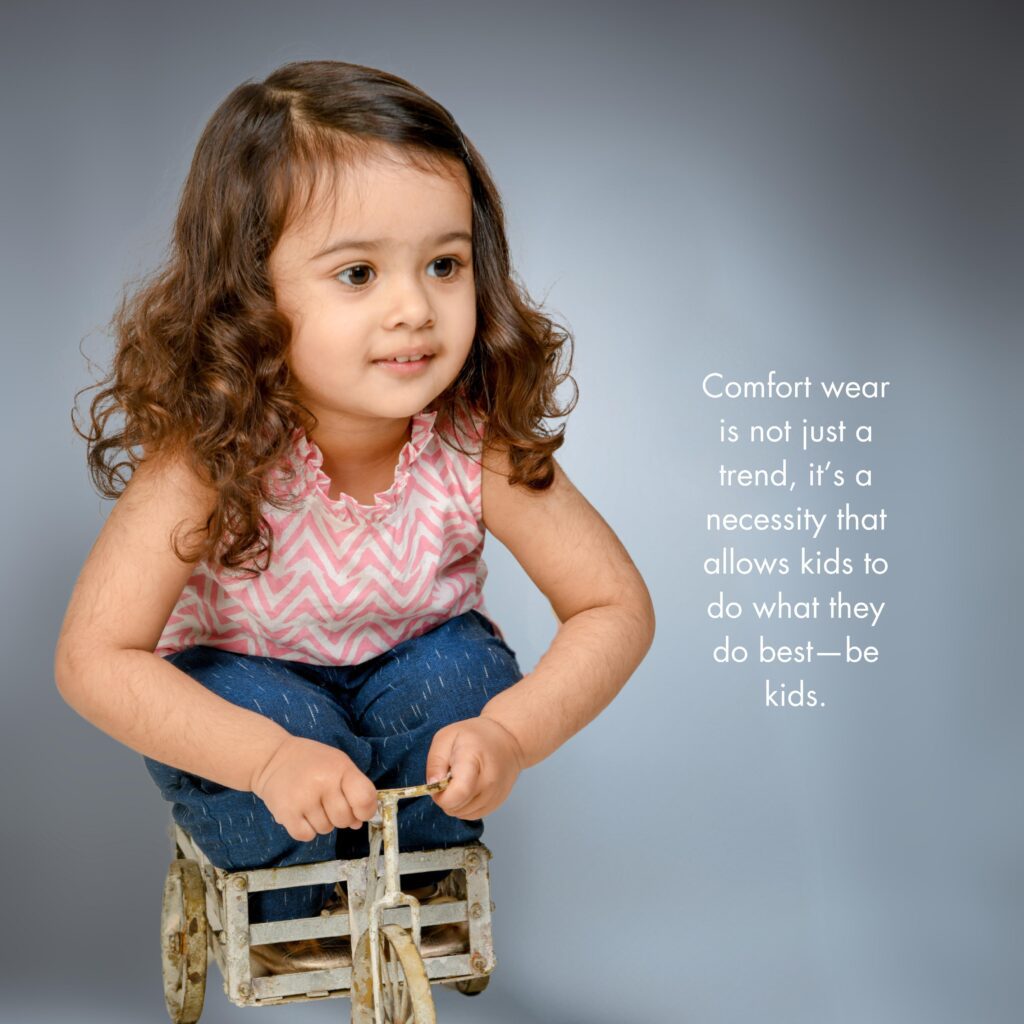
Every parent has experienced that frustrating yet revealing moment: you’ve lovingly picked out a cute outfit for your toddler , perhaps a frilly dress, a tiny bow tie, or a traditional outfit for a festive function—only to be met with strong resistance. Your child absolutely refuses to wear it. There are tears, tantrums, or maybe just a quiet, firm “No.” The reason? It’s uncomfortable.
The Reality Behind the Refusal
Children, especially toddlers and young kids, are brutally honest. Unlike adults who might endure discomfort for the sake of appearances, children instinctively reject anything that makes them feel restricted, itchy, hot, or just “not right.”
Maybe it was a frock with too much netting that scratched at your daughter’s arms. Or a collared shirt that made your son feel stiff and cranky. Or a pair of brand-new pants that looked adorable but felt too tight around the tummy. The common thread? Discomfort always trumps fashion when it comes to children.
The Aftermath: What Parents Realize
That moment when your child refuses to wear something uncomfortable is often an eye-opener.
1. 👉Comfort Must Come First
You start to realize that your child’s well-being is far more important than how stylish or “presentable” they look. A happy, giggling child in soft cotton clothes will always outshine a sulking, itchy child in embellished synthetic fabric.
2.👉 The Importance of Listening
That small act of resistance teaches parents a powerful lesson in empathy. Instead of brushing it off as a tantrum or mood swing, many begin to pause and listen. Children have limited ways to express discomfort—and refusing to wear something is a clear signal. Once you tune in, you start making more thoughtful clothing choices.
3.👉 Fashion Can Wait
Festivals, weddings, birthday parties—these are all events where parents often feel pressured to “dress up” their children. But after an uncomfortable episode, many parents begin to see that these occasions are not worth the trade-off in their child’s mood and freedom. The photos might be cuter with that silk kurta or stiff dress, but the memories are warmer when the child is smiling, running, and participating joyfully.
4. 👉Minimalism Makes Sense
After such experiences, some parents shift towards more breathable, simple, and fuss-free clothes. Pure cotton, easy-to-wear silhouettes, and designs without embellishments or rough linings become their go-to-list. These choices not only keep the child happy but also make daily dressing smoother for everyone.
5. 👉You Start Involving Your Child
Another big change that happens is inclusion. Parents begin involving their children in picking out clothes—offering them choices and letting them feel fabrics. This makes the child feel heard and builds a sense of autonomy. Over time, children learn to express their preferences clearly, and parents gain confidence that their child is both comfortable and happy.
A Common Story, A Shared Learning
It’s a story that repeats itself in countless households— your young one refusing to wear a birthday outfit, or screaming midway through dressing up for a function. But each of these stories carries the same underlying message: comfort is non-negotiable for children. And once we learn that, parenting becomes just a little bit easier and a lot more compassionate.
What Was It For You?
Take a moment to recall. Was it that beautiful but bulky heavy embroidered suit for Diwali? Or the adorable summer dress with an itchy waistband? Whatever it was, that experience probably changed how you approached clothing choices thereafter.
Know that you’re not alone. Every parent learns, adjusts, and grows. And in this journey, every cry of discomfort is actually an opportunity to make better, kinder choices for little ones.
❤️ A Comfortable Child Is A Happy Child ❤️
Children don’t care about trends or impressing others—they care about how they feel. Their refusal to wear something uncomfortable isn’t defiance; it’s honesty in its purest form. And as parents, when we listen, we not only make dressing them easier—we also build trust, respect, and a deeper connection. Because in the end, a comfortable child is a happy child. And that happiness is always the best-dressed look in the room.
